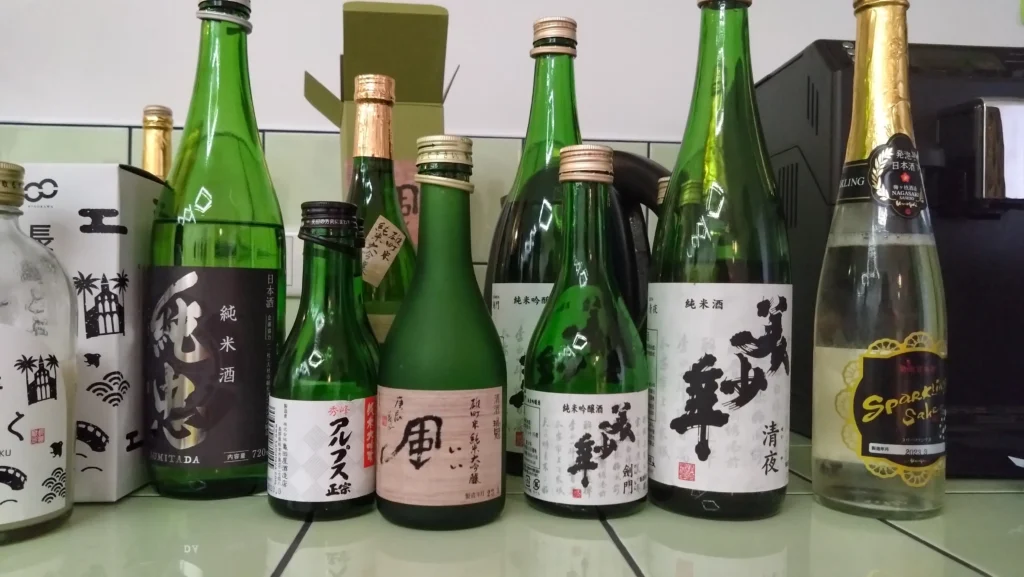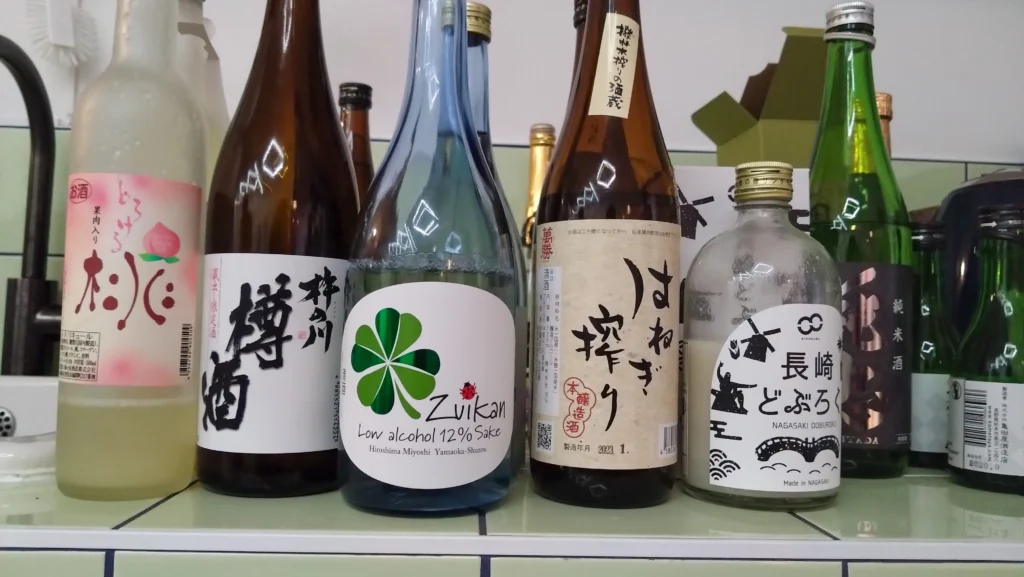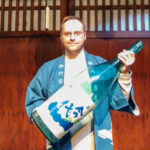During the sake and cheese tasting the nice people of Sakenomism also notified the participants that there would be a more extensive tasting at the end of the month. Of course, this piqued my interest and thankfully two of my best friends also joined. So after a long week of work and preparation for the JLPT, it was time to head over to Amsterdam and enjoy some nice sake!
My friends and I arrived a bit early at the venue, but thankfully we were graciously welcomed by Sayaka of Sakenomism, who immediately put a nice sparkling sake in our hands. This sparkling sake had a nice consistency, and almost a yoghurt-like taste. I thoroughly enjoyed it! While enjoying this sake, the other participants arrived and it was time to start the tasting.
This evening we had 11(!) sake to try:

- Umegae Shuzo Sparkling sake 8%, 70% polishing rate
- Bishonen Seiya Junmai 15%, 70% polishing rate
- Bishonen Seiya Junmai Ginjo 15%, 60% polishing rate
- Alps Masamune Junmai Daiginjo 15%, 49% polishing rate
- Iikaze Junmai Daiginjo 15%, 50% polishing rate
- Kinokawa Junmai Sumitada 15%, 65% polishing rate
So let’s start off with these six sake. This tasting felt a lot like a mini WSET course. Everyone got a very detailed handout, explaining a lot of concepts like: rice polishing, different kinds of fermentation, the effect of rice on the taste, etc. So after the sparkling sake, it was time to try 2 sake from Kumamoto prefecture called ‘Bishonen’. One a Junmai, one a Junmai Ginjo. These two sake were of course used to explain the difference in polishing rate. They both use the same two rice (Hinohikari + Hananishiki), so the difference in taste is mostly cause by the difference in polishing rate. What surprised me is that the Junmai Ginjo sake still had a lot of umami in it’s pallete!
Next up two Junmai Daiginjo, one made with Miyama-nishiki rice (Alps Masamune), and the other made with Omachi rice (Iikaze). In contrast with the 2 previous sake, the polishing rate was (relatively) the same, but this was used to show the effect of the rice on the flavour. The Alps Masamune had a very full flavor palette and mouthfeel, with lot’s of melon and banana aromas. The Iikaza on the other hand had more flavors similar to peach, a bit of grain and a peppery finish. Both of these sake were amazing, and the Miyama-nishiki definitely was my favorite of the night.

- Kinokawa Nagasaki Doburoku 11%
- Bansho Hangegi Shibori Honjozo 14%, 70% polishing rate
- Zuikan Clover Junmai Ginjo Genshu 12%, 60% polishing rate
- Kinokawa Taru sake 14%, 75% polishing rate
- Liquer Torokeru Momo 8%
Time for the big surprise of the night: Doburoku! Doburoku can’t actually be classified as sake, as this is an unfiltered brew. Nigori sake is usually called ‘unfiltered sake’, but that is not true. Legally, all sake need to be filtered, even if it’s a very course one. Also, if you don’t have a special licence, Doburoku is illegal to make, so it’s quite rare. Quite thick, sweet, and absolutely great. I am glad I was able to buy a bottle for home.
The three sake after the Doburoku were used to show different choices a brewer can make to finish the product. The Zuikan Clover is a low alcohol undiluted sake, but it still packs a flavor punch! Made with Yamada-nishiki rice, this sake it just a fruity festival in your mouth. I already tried the Kinokawa Taru sake at KaaSake and I think it’s a solid choice. Quite subtle for a taru sake, with nice cedar flavors. The Bansho Hanegi is a sake that is pressed using a traditional method. Very fruity for a Honjozo sake!
We finished the night with a nice peach liquer. The tasting was incredibly fun, and thankfully most people stuck around for a long time after we finished. Exchanging stories about sake and Japan, while finishing some bottles, what a good way to spend a night!

Add a comment